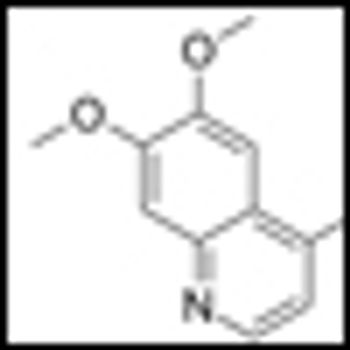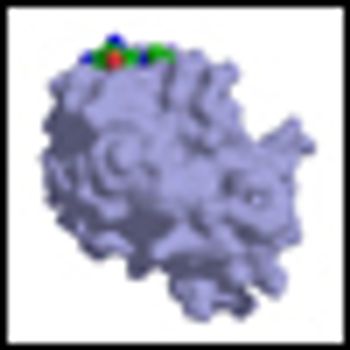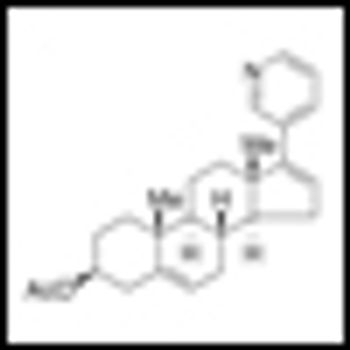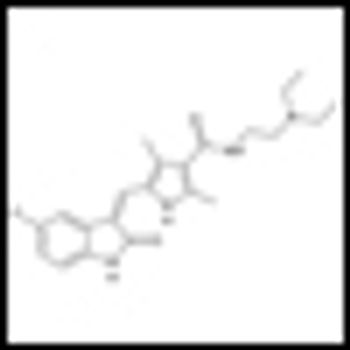
The US Food and Drug Administration (FDA) has approved the angiogenesis blocker axitinib (Inlyta), a twice daily oral drug, as a second-line treatment for patients with advanced renal cell carcinoma.

Your AI-Trained Oncology Knowledge Connection!


The US Food and Drug Administration (FDA) has approved the angiogenesis blocker axitinib (Inlyta), a twice daily oral drug, as a second-line treatment for patients with advanced renal cell carcinoma.

After several decades with only modest changes in the therapeutic paradigm, rapid progress in understanding the biology of advanced prostate cancer has been translated into more accurate terminology, such as “castration-resistant” (as opposed to “hormone-refractory” or “androgen-independent”) prostate cancer, as well as clinically meaningful therapeutic developments.

These are, indeed, exciting times for patients with metastatic prostate cancer and the clinicians who care for them.

We have entered a period of accelerated drug development and optimism in the care of advanced prostate cancer. The treatment paradigm for these patients is rapidly evolving, with future study needed to define the optimal sequencing and potential combinations of these new agents.

This review will examine agents with potential activity in the palliation and treatment of skeletal metastases of prostate cancer, and will weigh the clinical-outcomes evidence for and against their broad use.

Muscle-invasive bladder cancer is an aggressive and potentially lethal disease. Integration of multimodal therapies, improved surgical techniques, and utilization of targeted agents has tremendously improved outcomes.

Patient selection based on a much more comprehensive biologic assessment of both host and tumor is likely the key to further advances in the treatment of all bladder cancer patients. Until such time, there can be no compromise in the careful application of the rigorous therapy required to optimize outcomes.

We are seeing a new era in drug development with the identification of novel intra- and extracellular targets to which therapies are being directed. Perhaps more exciting is learning how to optimize standard therapies in combination with biologic agents and radiopharmaceuticals in order to target multiple pathways in prostate cancer growth. Stay tuned!

Still missing in our treatment of bladder cancer are the tools to accurately predict response to a specific therapy, whether it be chemotherapy, radiation, or transurethral resection alone. Once we have these tools, we will be well on our way to applying a more intelligent, true personalized medicine approach to the treatment of this disease.

Researchers have identified a novel rare, germline mutation linked to a predisposition for both melanoma and renal cell carcinoma (RCC) that results in a five-fold increased risk of developing melanoma, RCC, or both.

Vitamin E supplements, rather than reducing the risk of prostate cancer have been found to increase the risk of developing the disease. The findings are a 3-year follow-up to the Selenium and Vitamin E Cancer Prevention Trial (SELECT).

Based on a review of prostate cancer treatment and screening trials, the U.S. Preventive Services Task Force (USPSTF) has stated that prostate-specific antigen (PSA)–based screening may not be necessary, saying that the potential benefits of the screening do not outweigh the potential harm of complications from evaluations and treatments.

The U.S. Food and Drug Administration (FDA) has approved two new indications for the osteoporosis drug denosumab, as a treatment for bone loss in men receiving androgen deprivation therapy for nonmetastatic prostate cancer and in women receiving adjuvant aromatase inhibitor therapy for breast cancer.

Wide variations in the care of early bladder cancer exist, and among high–treatment intensity urology providers, overall survival is unchanged while rates of transition to major surgery are actually increasing. It has been said that for bladder tumors, it is time for a paradigm shift. We believe that the time is overdue.

Bladder cancer is a complex neoplasm with multiple histologic subtypes and a wide spectrum of clinical states, ranging from relatively nonlethal Ta cancers to virulent M1 disease.

In this issue of ONCOLOGY, Kamat and Mathew provide an excellent overview of the current status and future imperatives of bladder cancer treatment and research.

Cabozantinib (cabo), formerly known as XL184, has recently shown unprecedented activity against bone metastases in prostate cancer patients in a phase II trial.

The patient is a 43-year-old man who was initially evaluated at an outside institution for unexplained anemia and who was found to have a large right kidney mass. He underwent a radical nephrectomy for a 19-cm large-cell, poorly differentiated neoplasm, consistent with pleomorphic, epithelioid angiomyolipoma (EAML) with extensive necrosis and cytologic atypia.

Researchers have found that patients with early, localized prostate cancer benefit from short-term androgen-deprivation therapy (ADT) for 4 months prior to and during radiotherapy, and that the addition of ADT increases overall survival and decreases mortality.

Scientists at the Center for Translational Pathology and the department of urology at the University of Michigan Medical School have developed a new noninvasive urine test for prostate cancer that may be able to stratify patients by risk.

Hoppe et al present an excellent review of the physics relevant to an understanding of proton therapy-and of the available literature assessing the use of proton beams in the management of prostate cancer.

This review discusses the rationale, history, and current status of proton therapy for prostate cancer-and controversies regarding it.

At the session on Management of Prostate Cancer in Older Adults: To Treat or not to Treat, Anthony D’Amico, William Dale, and Shabbir Alibhai all lent their clinical expertise in treating prostate cancer to outline the latest recommendations for screening and treating men for prostate cancer.

Abiraterone acetate has been shown to significantly acetate prolonged overall survival among patients with metastatic castration-resistant prostate cancer (CRPC) who previously received chemotherapy. The results of the Phase III study were published in the May 26, 2011 edition of the New England Journal of Medicine.

A retrospective study of metastatic renal cell carcinoma (mRCC) patients published in the journal Cancer found that patients treated with tyrosine kinase inhibitors (TKIs) had better overall survival and less-frequent metastasis to the brain.